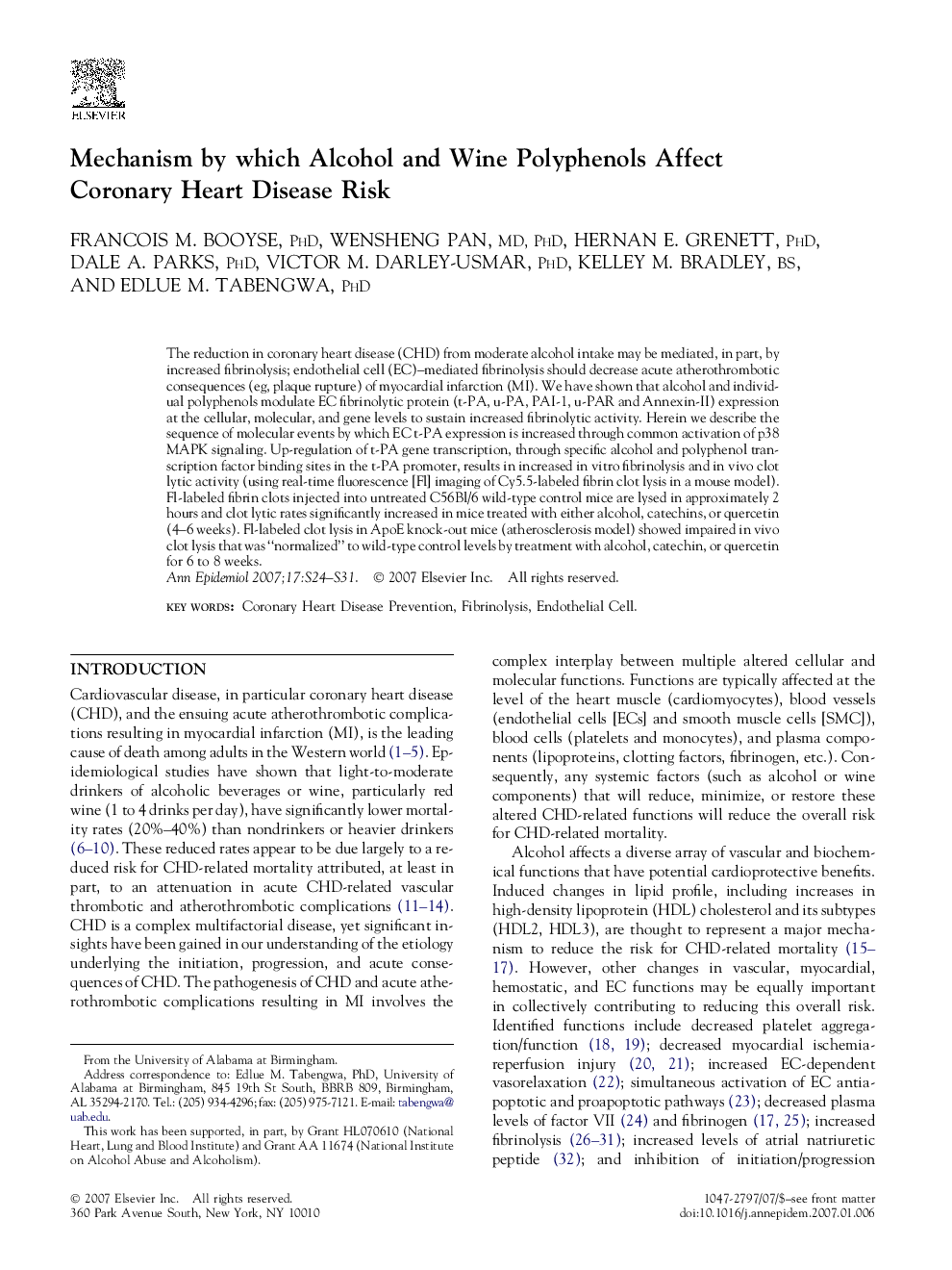| کد مقاله | کد نشریه | سال انتشار | مقاله انگلیسی | نسخه تمام متن |
|---|---|---|---|---|
| 3445430 | 1595340 | 2007 | 8 صفحه PDF | دانلود رایگان |

The reduction in coronary heart disease (CHD) from moderate alcohol intake may be mediated, in part, by increased fibrinolysis; endothelial cell (EC)–mediated fibrinolysis should decrease acute atherothrombotic consequences (eg, plaque rupture) of myocardial infarction (MI). We have shown that alcohol and individual polyphenols modulate EC fibrinolytic protein (t-PA, u-PA, PAI-1, u-PAR and Annexin-II) expression at the cellular, molecular, and gene levels to sustain increased fibrinolytic activity. Herein we describe the sequence of molecular events by which EC t-PA expression is increased through common activation of p38 MAPK signaling. Up-regulation of t-PA gene transcription, through specific alcohol and polyphenol transcription factor binding sites in the t-PA promoter, results in increased in vitro fibrinolysis and in vivo clot lytic activity (using real-time fluorescence [Fl] imaging of Cy5.5-labeled fibrin clot lysis in a mouse model). Fl-labeled fibrin clots injected into untreated C56Bl/6 wild-type control mice are lysed in approximately 2 hours and clot lytic rates significantly increased in mice treated with either alcohol, catechins, or quercetin (4–6 weeks). Fl-labeled clot lysis in ApoE knock-out mice (atherosclerosis model) showed impaired in vivo clot lysis that was “normalized” to wild-type control levels by treatment with alcohol, catechin, or quercetin for 6 to 8 weeks.
Journal: Annals of Epidemiology - Volume 17, Issue 5, Supplement, May 2007, Pages S24–S31